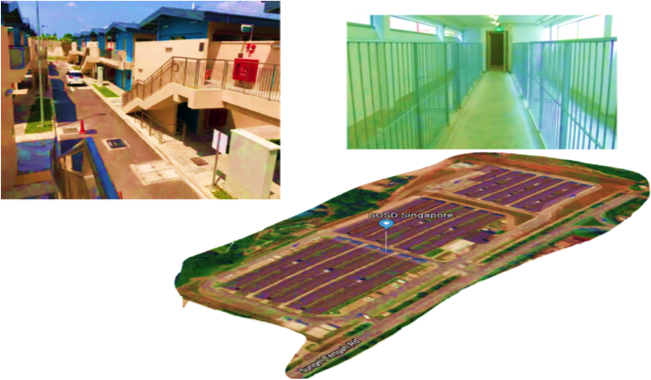President's Message
Message 08/2018

Mr Lim Soon Heng, PE, FIMarEST.
Founder President
Animal Lodge at Sungei Tengah Road, why not an Animal Park at sea?

In land stressed Singapore, it is not easy if you are a stray dog or cat. There are about 70,000 creatures like you competing for space with about 6 million people. In our urban areas as many as 250 people live in a plot of land about the size of a football field.
Up until last year, animal welfare groups build make-shifts homes in suburban areas and kampongs to house strays. Volunteers help, contributing, cash, food and time to render care until these strays find new homes.
The Government constructed a facility in Sungei Tengah comprising rows and rows of 2-storey buildings occupying a 3.68-ha plot of land. It opened in March this year to a hailstorm of protests and criticisms. Animal lovers were unhappy with the confined spaces, the lack of natural light and ventilation. Waste water from the cleaning of animals and food disposal resulted in chocked pipes. The remoteness of the site dampens volunteers’ enthusiasm to care for the animals.
A better solution is possible: We strongly recommend that the Government consider a floating animal park. The existing facility can be repurposed for other use.
The floating animal park are modular in construction and may be replicated when there is a demand. These farms may be clustered together or be located around the main land in places such as the West Coast Road, or Pulau Ubin or Bedok. Each one is movable. Its location can be changed anytime. To leverage on lower labour cost, the construction can be completed in Batam. The first unit may take six months, but subsequent units could be delivered in four. The foundation and he superstructure may be constructed concurrently in two different locations.
The park is multi-tier and each level is 200m in length and 25m in width. Floor beams span 12.5m. Floors are made from light weight concrete. Floor to ceiling height is 3m. Each building has 8 tiers (more if necessary.) The foundation is a concrete platform measuring 200m x 25 m x 2.5 m depth. The platform with ballast tanks (for fresh water storage) and the weight of the live load and superstructure will submerge about 1.5m leaving a freeboard of 1 meter above the water line.
Such a building will have the wide-open space on each level of 5000 sq. m similar to the kampong environment. With 8 tiers it will yield 40,000 sq. m which can comfortable provide homes for about 5000 animals. The main deck (Tier 1) will be set aside for administration, animal food supplies. The top deck (Tier 8) may be landscaped for walking dogs and for the caregivers to network socially. Each tier is connected to the tier above and below by a walk-up ramp way with a grade of 5%. This enables man and animal to walk around from deck to deck.
Each tier has side translucent side cladding. However, side claddings are only covering the top half. The bottom half is surrounded by vegetation, fruit creepers of fruit trees which will absorb animal wastes.
Shore power and water supply is connected to the facility that allows for the rise and fall of tide. Alternatively, water and power can be generated on board using diesel stored in the tanks below deck.
The module is anchored by chains. The catenary action allows for the float to rise and fall with tidal changes but keep it in position sideways. Rolling action due to wind or waves will be imperceptible. The animals will not feel a thing. (Note: The world’s first dairy farm will become operational next year in Rotterdam. That farm measures 24 m x 24m. It is also worth pointing out that shipyards in Singapore are experts in building ships that carry cattle, sheep and goats for many days across oceans.)
We expect the total cost of the floating park to be about $8 million. It will have a life of at least 50 years.
For comparison, JTC rent the 3.68-hectare land on a 30-year lease for about $11 million. The cost of the building (assuming a gross area equal to 50% of the plot) is about $20 million. Together it would be almost 4 times more expensive than the floating alternative and it would have 18,400 m2 of rentable space against 40,000 m2.
The floating alternative would also not compete for land with other users. After 30 years, unlike a land-based building it need not be demolished. It could be gifted to a third world country to be converted to a floating farm or a village school.
Lim Soon Heng
26 August 2018
